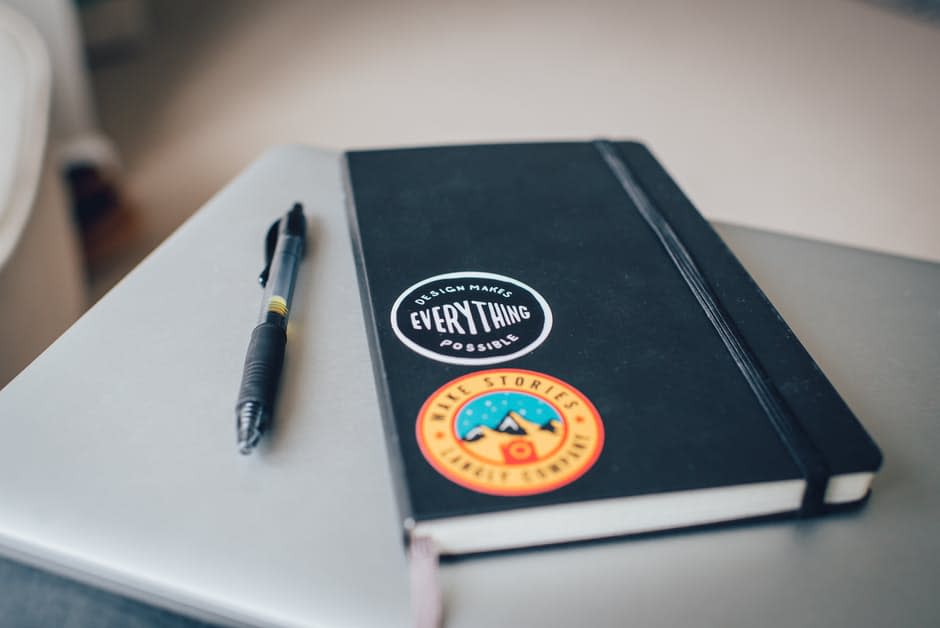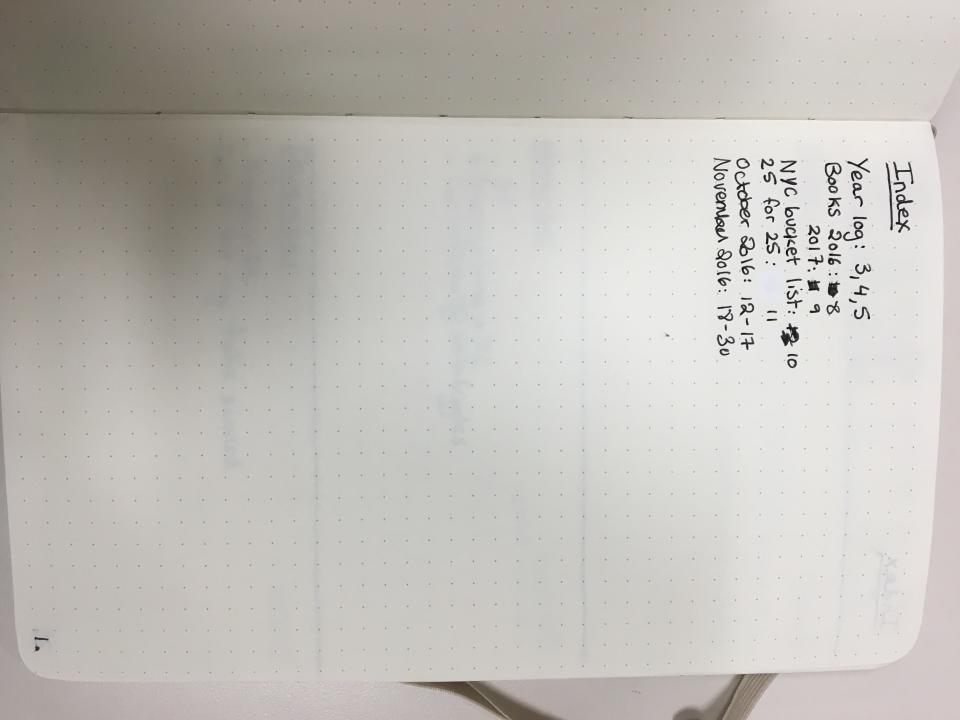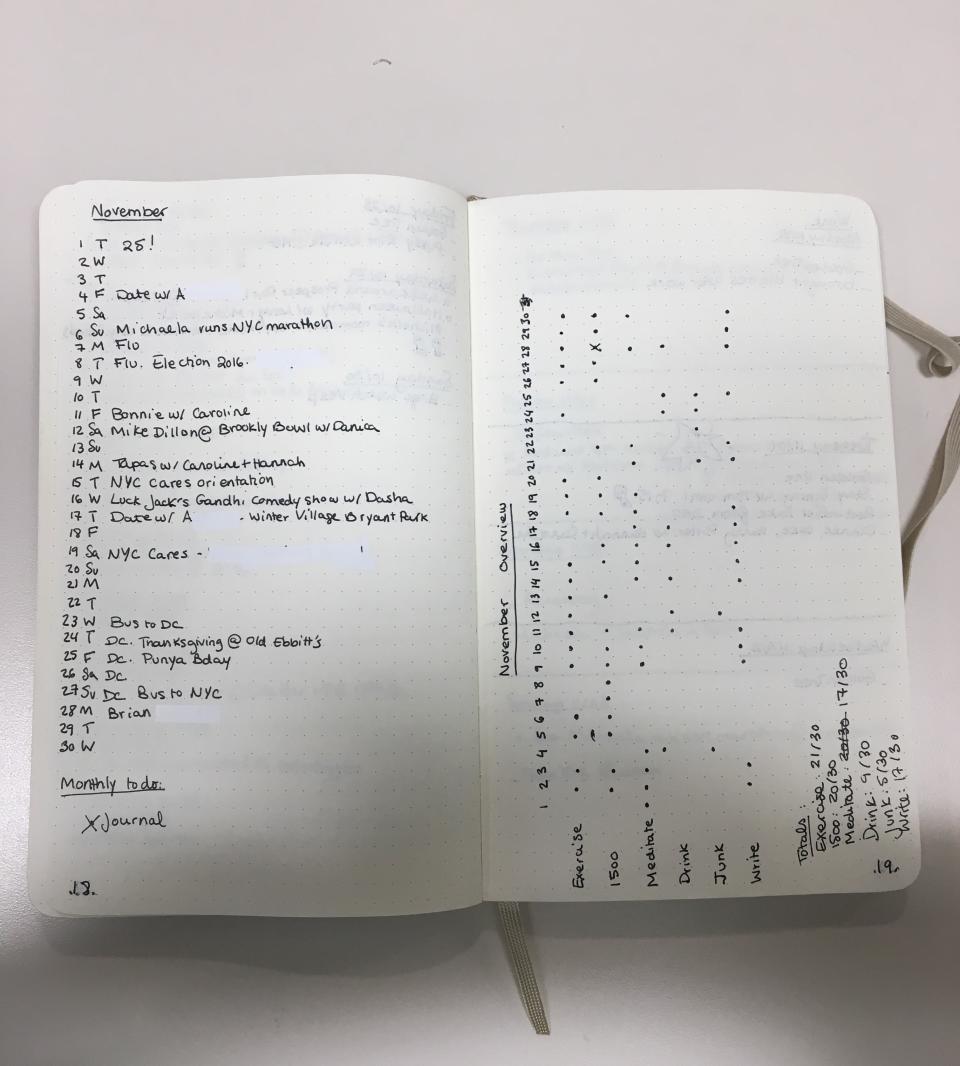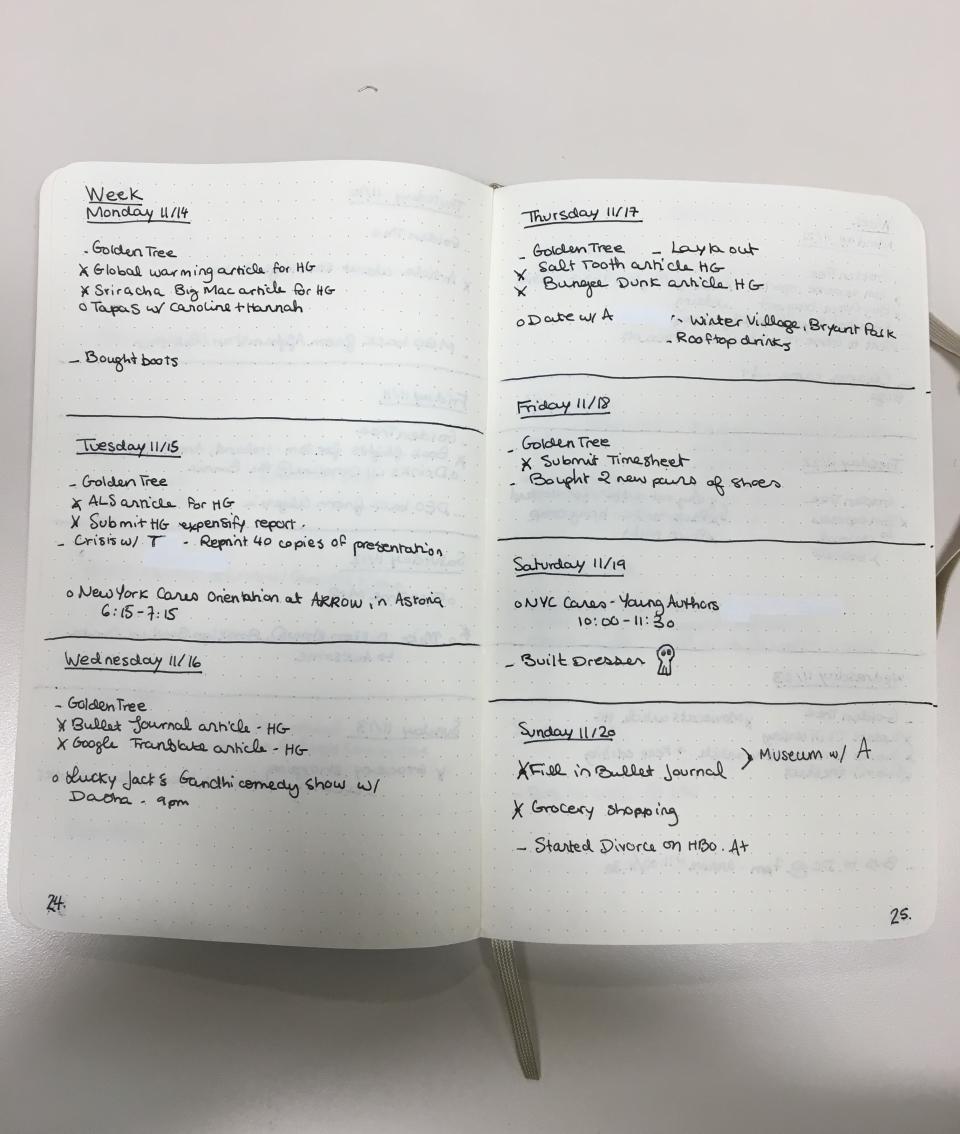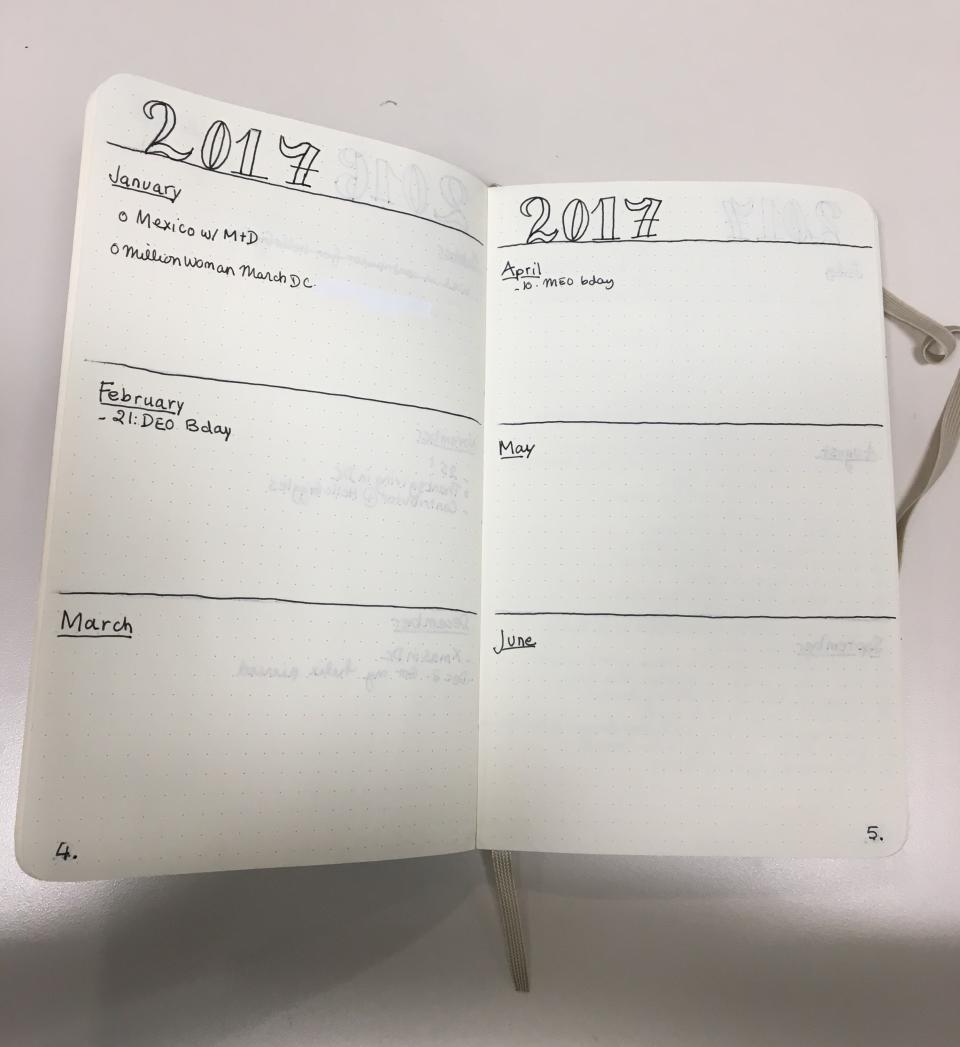The Bullet Journal helped me get my life in order — and it can seriously help you, too
If you’re like me, you’re probably juggling a few organizational methods at once.
Until recently, my system involved a combination of cryptic iCalendar events (B @ R 3 p.m. – What?!), hastily scribbled Post-It notes, and a long email chain to myself entitled “To do – SERIOUSLY”.
So I was intrigued when, a few months ago, I heard about the Bullet Journal.
What is a Bullet Journal?
According to its many fans, it’s some combination of planner/to-do list/notebook/sketchbook/diary/vision board. That may sound overwhelming, but essentially, it’s a blank notebook that you fill with lists and bullet points (hence the name).
The Bullet Journal (or BuJo, as I refuse to call it) was invented by Ryder Carroll, 36, a digital product designer from Brooklyn, New York. Carroll developed the system over twenty years, based on strategies he devised to cope with his ADD.
A photo posted by Kimberly | BossgirlBujo (@bossgirlbujo) on Dec 9, 2016 at 2:57pm PST
How does it work?
A basic Bullet Journal is typically a blank, mid-sized notebook that is sturdy enough to carry around. A lot of Bullet Journalists swear by Moleskines or Leuchtturms, but my first journal was a $4 Staples notebook and I loved it.
It features numbered pages, an index at the beginning to track topics and the pages on which they appear (ex. Tinder dates: 5,8,14,15). and a future log to keep track of big tasks, events or goals coming up in the next few months.
Index page. Pro tip: Writing the pages down correctly the first time is helpful.
It also has monthly logs to give you an overview of each month.
Monthly log.
And weekly logs to give you an overview of each week.
Weekly log. I know I bought three pairs of shoes in a week, please don’t judge me!
There are daily logs to keep track of your tasks, events, thoughts, and notes as they come up throughout the day, and a future log to keep track of big tasks, events or goals coming up in the next few months.
Future Log. Obviously my future is not very well planned.
Users fill in these various sections (known as “modules”) using a system called Rapid Logging. Rapid Logging is the language of the Bullet Journal, a way for you to glance at a page and quickly identify the nature of each item.
In Rapid Logging, tasks are marked with a dot “•”, events are marked with a circle “o”, and notes with a dash “—.” When tasks are completed, the dot is turned into an “x”. The greater than sign “>” indicates that a task has been “migrated,” or you didn’t finish it today, so you moved it to the next day/month. The less than sign “<” indicates that a task has been scheduled.
A photo posted by Ryder Carroll (@bulletjournal) on Nov 6, 2016 at 9:00am PST
Ugh, this seems complicated. Why shouldn’t I just use my iCalendar?
Honestly, when I started reading about “modules” and “future logs,” I was worried that I had unwittingly signed on for some sci-fi/Ender’s Game type situation. It seemed like a lot more effort than I usually put into planning.
But that’s kind of the point.
The Bullet Journal is so effective in part because writing down all of your tasks takes time. It forces you to slow down and reflect on each item, and consider whether or not it’s truly a priority.
If you’ve migrated and rewritten “Sign up for SoulCycle!!!” six times, it might be time to consider finding another fitness class that you actually want to attend.
Research also suggests that writing things down may help with recall. A 2014 study in the journal Psychological Science found that college students who wrote out their notes longhand retained more conceptual information than students who typed their notes on their laptops. In other words, writing out your to-do list may help you remember it better than if you typed it on your phone or computer.
Okay, but I looked up the #bulletjournal tag on Instagram and everyone’s journal is so beautiful and elaborate, and I don’t have the time or the calligraphy skills for that.
Your Bullet Journal can be adapted and personalized however you’d like. Some people get really crafty, and turn their journals into works of art. Mine looks like it belongs to a small child who spills a lot and has just recently learned to write.
The things is, as long as you take a little bit of time each day to write down what you’ve done and what you need/want to do, it doesn’t matter what your Bullet Journal looks like — organizing your life will suddenly be much easier.
If you’re still not totally sure how this all works, BuzzFeed did an awesome and beautiful explainer that you can check out here.
So, take a page from the organizational queen Leslie Knope, and start jammin’ on your planner.
The post The Bullet Journal helped me get my life in order — and it can seriously help you, too appeared first on HelloGiggles.
